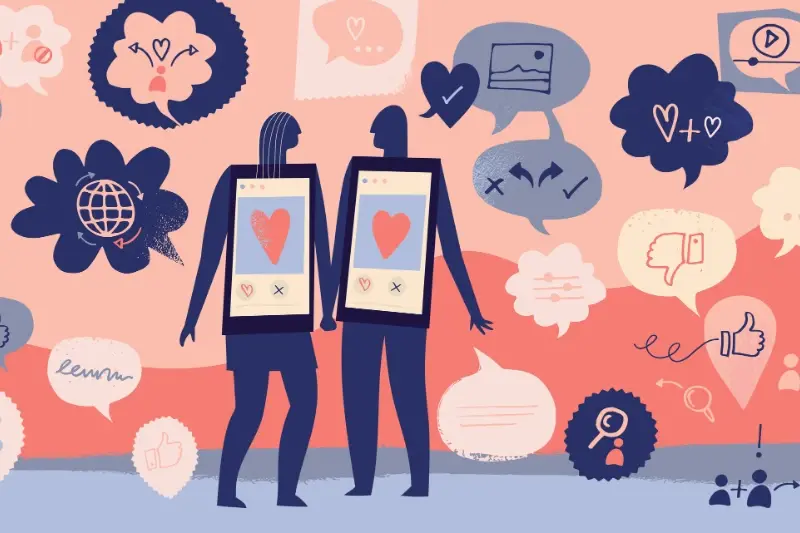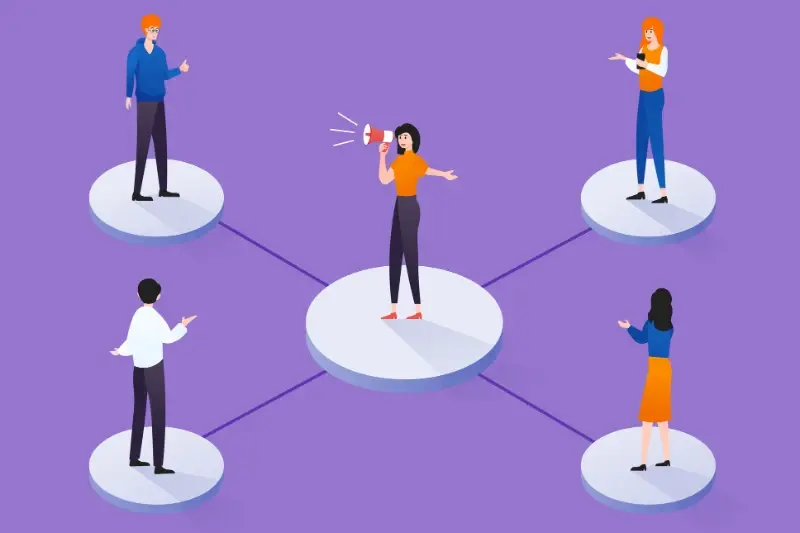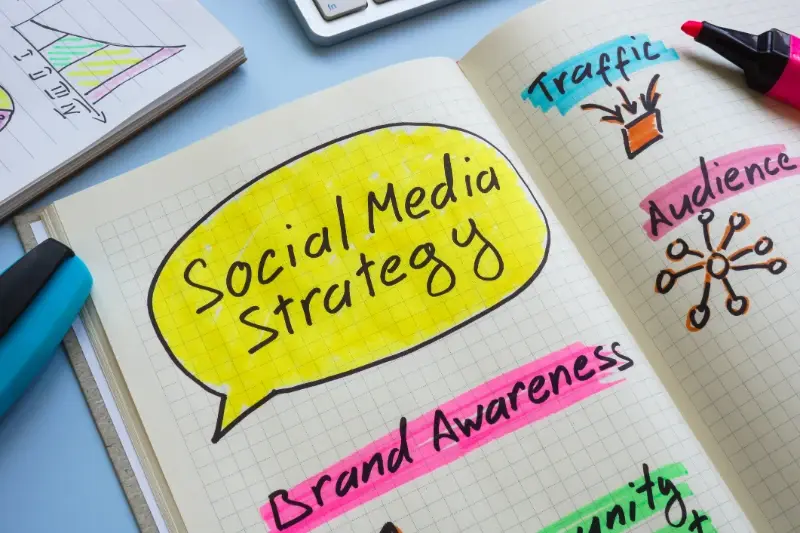From Sign-Up to Purchase: Building Email Funnels for App Success
Email marketing remains one of the most powerful tools for mobile app success, yet most app developers barely scratch the surface of what's possible. I've worked with countless app projects over the years, and the ones that truly succeed are those that understand how to build proper email funnels—structured sequences that guide users from their first interaction all the way to making a purchase.
The mobile app landscape has become incredibly competitive. Getting someone to download your app is just the beginning; keeping them engaged and converting them into paying customers is where the real challenge lies. This is where email marketing becomes your secret weapon. Unlike push notifications that can be turned off or social media posts that get buried in feeds, emails land directly in your users' inboxes with a much higher chance of being seen.
The best mobile apps don't just focus on acquisition—they build relationships that turn casual users into loyal customers through strategic email communication
Building an effective email funnel for your mobile app isn't about sending random promotional messages and hoping for the best. It requires a well-thought-out conversion strategy that considers where users are in their journey and what they need to hear at each stage. From the moment someone signs up to your app until they make their first purchase (and beyond), every email should serve a specific purpose in moving them closer to becoming a valuable customer. The good news? Once you understand the fundamentals, creating these email sequences becomes much more straightforward than you might think.
Understanding Email Funnels For Mobile Apps
Right, let's get straight to the point—email funnels for mobile apps aren't the same as those fancy marketing campaigns you see for e-commerce websites. They're actually quite different beasts altogether, and understanding this difference can make or break your app's success.
An email funnel is simply a series of emails that guide your app users through a journey. It starts when someone downloads your app or signs up for your service, and it continues until they become a loyal, paying customer. Think of it as a gentle nudge system that keeps your app relevant in people's minds without being annoying.
The Mobile App Difference
Here's what makes app email funnels special: your users already have your product on their phone. Unlike traditional businesses where emails drive traffic to a website, your emails need to bring people back to something they've already got. That changes everything about how you approach your messaging.
Mobile users behave differently too—they check emails on their phones, often whilst doing other things. Your emails need to be scannable, quick to digest, and most importantly, they need to solve real problems that your users face within your app.
The Three-Stage Journey
Every successful app email funnel follows three main stages:
- Welcome and onboarding—getting new users comfortable with your app
- Engagement and value delivery—showing users why they need your app regularly
- Conversion and retention—turning free users into paying customers and keeping them happy
The magic happens when these stages work together smoothly. Each email should feel natural and helpful, not pushy or sales-focused. After all, you want users opening your emails, not marking them as spam!
Setting Up Your Email Collection Strategy
Right, let's get down to business. You've got your mobile app up and running, but now you need to capture those precious email addresses. This isn't about being pushy—it's about creating genuine value that makes users want to stay connected with your brand beyond their app experience.
Timing Your Email Capture
The biggest mistake I see app developers make is asking for emails too early. Users need to experience your app's value before they'll trust you with their contact details. Consider these strategic moments for email collection:
- After completing their first successful action in your app
- When they're about to lose progress (offering to save it via email)
- Before accessing premium features or content
- During the checkout process for in-app purchases
- When they've used your app consistently for several days
Gate valuable content behind email signup—think exclusive tutorials, bonus features, or early access to updates. This creates a fair exchange rather than a one-sided request.
Making Your Value Proposition Clear
Your email signup needs to answer one simple question: what's in it for me? Be specific about what users will receive. Instead of "Subscribe to our newsletter," try "Get weekly app tips and exclusive features." Users are smart—they know you're going to send them marketing emails, but they need to understand the benefit.
Keep your signup forms simple. Email address and maybe a first name—that's it. You can gather more information later through your email sequences. The fewer fields you include, the higher your conversion rates will be. Trust me on this one; I've tested it countless times across different apps and industries.
Creating Your Welcome Email Sequence
Your welcome email sequence is the first proper conversation you'll have with new app users after they sign up—and getting it right can make or break their relationship with your brand. Most people expect that first email within minutes of signing up, so don't keep them waiting.
The opening email should do three things: confirm their subscription, set expectations about what they'll receive, and deliver immediate value. Skip the corporate waffle and speak like a real person. Thank them for joining, tell them what comes next, and give them something useful right away—whether that's a quick tip, exclusive content, or early access to a feature.
Timing Your Sequence
Space out your welcome emails over 5-7 days rather than bombarding people immediately. The second email might arrive 24 hours later with helpful tips for getting started with your app. Email three could showcase a popular feature they might have missed. Each message should build on the last whilst providing standalone value.
What to Include
Your welcome sequence should cover the basics without overwhelming new subscribers. Here's what works well:
- A warm introduction to your brand and team
- Clear instructions for getting the most from your app
- Links to helpful resources or tutorials
- Social proof like user reviews or success stories
- Contact details for support if they get stuck
Keep each email focused on one main idea rather than cramming everything together. People are busy and won't read lengthy emails on their phones. Short, scannable content with clear calls-to-action works best for mobile users scrolling through their inbox.
Nurturing Users Through The Middle Funnel
Right, so your users have signed up and they've received your welcome emails. Great! But here's where things get a bit tricky—you've got to keep them engaged without being pushy. The middle funnel is where most mobile apps lose their subscribers, and honestly, it's not that hard to see why.
Your middle funnel emails need to provide genuine value whilst gently guiding users towards that first purchase or premium upgrade. Think educational content about getting the most from your mobile app, user success stories, or behind-the-scenes content that makes people feel part of something bigger. The key is consistency without overwhelming people's inboxes.
Finding The Right Email Frequency
I've tested email frequencies across dozens of mobile app projects, and there's no magic number that works for everyone. Some apps can send daily emails (particularly news or fitness apps), whilst others work better with weekly check-ins. The trick is monitoring your unsubscribe rates and engagement metrics—they'll tell you if you're overdoing it.
The middle funnel is where relationships are built, not where sales are made
Content That Actually Works
Your conversion strategy during this phase should focus on education and social proof rather than direct selling. Feature tutorials, user-generated content, or case studies showing how others benefit from your app. You want people thinking "I need to use this app more" rather than "I wish they'd stop emailing me." Remember, engaged users are far more likely to convert when you do make that sales pitch later on.
Converting Subscribers Into Paying Customers
This is where things get interesting—and where many apps stumble. You've got people on your email list who are engaged with your content, but now you need to turn them into paying customers. The key here isn't to bombard them with sales messages; it's about showing them exactly how your app solves their specific problems.
Start by segmenting your email list based on user behaviour. Someone who's downloaded your app but never made a purchase needs different messaging than someone who's been using the free version for months. Understanding freemium versus premium models can help you create targeted campaigns that speak directly to where each user sits in their journey with your app.
Timing Your Conversion Campaigns
The timing of your sales emails matters more than you might think. For most apps, there's a sweet spot—usually after users have experienced some value but before they've settled into using just the free features. This might be after they've completed their first project, hit a usage limit, or been active for a certain number of days.
- Send conversion emails when users hit feature limitations
- Target users who've been consistently active for 7-14 days
- Follow up with users who've abandoned premium features during trials
- Create urgency with limited-time offers for engaged free users
Making the Value Crystal Clear
Your conversion emails shouldn't just list features—they should paint a picture of what life looks like with your premium app. Show specific examples of how the paid features save time, solve problems, or unlock new possibilities. Include real user testimonials and concrete benefits rather than vague promises.
Remember, people don't buy apps—they buy solutions to their problems. Make those solutions impossible to ignore.
Measuring And Optimising Your Email Performance
Right, so you've got your email funnel running—but how do you know if it's actually working? This is where most mobile app developers get a bit lost. They send out emails and hope for the best, but measuring performance isn't just about checking if people opened your emails.
The metrics that matter most for your mobile app conversion strategy are different from regular email marketing. Yes, open rates and click-through rates are useful, but what you really need to track is how many people move from one stage of your funnel to the next. Are users who receive your welcome sequence more likely to complete their profile? Do people who get your nurture emails actually upgrade to premium?
Key Metrics to Track
- Email-to-app conversion rate (how many email clicks lead to app opens)
- Funnel progression rates between each email sequence
- Revenue per email sent
- Unsubscribe rates by email type
- Time between email send and purchase
Set up UTM parameters in all your email links so you can track exactly which emails drive the most valuable users back to your app.
Optimisation That Actually Works
Once you've got your data, start testing one thing at a time. Change your subject lines first—they have the biggest impact on whether people even see your content. Then test send times; mobile app users often check emails differently than web users, so your optimal send time might surprise you.
Don't forget to segment your testing. New users behave differently from long-term subscribers, and what works for iOS users might not work for Android users. Small changes compound over time, so be patient with your optimisation efforts.
Common Email Funnel Mistakes To Avoid
After working with countless app developers over the years, I've spotted the same email funnel mistakes cropping up time and time again. The good news? Most of these are easily avoidable once you know what to look for.
The biggest mistake I see is sending too many emails too quickly. When someone downloads your app and signs up for emails, they're interested—but they're not ready to be bombarded. Space your emails out sensibly. One welcome email followed by weekly or bi-weekly content works much better than daily messages that'll send people straight to the unsubscribe button.
Technical Mistakes That Kill Conversions
Email design matters more than most people realise. Your emails need to look good on mobile phones because that's where most people read them. I've seen beautiful desktop email designs that look awful on a phone screen—text too small, buttons you can't tap properly, images that don't load. Test every email on your phone before sending it.
- Not personalising emails beyond "Hi [Name]"
- Forgetting to segment users based on their app behaviour
- Using subject lines that sound like spam
- Not including clear call-to-action buttons
- Sending emails at terrible times (like 3am)
Content and Strategy Blunders
Another common mistake is making every email about your app. Yes, you want people to use your app more, but constantly saying "open our app" gets boring fast. Mix in helpful tips, industry news, or content that adds value to their day. When you do ask them to take action, they'll be much more likely to listen because you've built trust first.
Finally, don't ignore your email metrics—but don't obsess over them either. Check your open rates and click rates monthly, not daily, and make gradual improvements rather than dramatic changes.
Conclusion
Building effective email funnels for your mobile app isn't rocket science, but it does require patience and attention to detail. Throughout this guide, we've covered everything from collecting those first email addresses to converting subscribers into paying customers—and if you've made it this far, you're already ahead of most app developers who think email marketing is old-fashioned.
The truth is, email marketing remains one of the most reliable ways to drive conversions for mobile apps. Yes, push notifications are immediate and social media is flashy, but email gives you direct access to your users' attention without fighting algorithms or competing with cat videos. When someone hands over their email address, they're giving you permission to build a relationship with them.
Your email funnel will need tweaking—that's just part of the process. What works for one app won't necessarily work for another, and what works today might need adjusting next month. The key is to start simple, measure everything, and make small improvements over time. Don't try to build the perfect funnel from day one; build a working funnel and make it better.
Remember that behind every email address is a real person who chose to trust you with their inbox. Respect that trust by sending genuinely helpful content, being transparent about your intentions, and always giving people an easy way to opt out. Do that consistently, and your email funnel will become one of your most valuable assets for growing your mobile app business.
Share this
Subscribe To Our Blog
You May Also Like
These Related Stories

Dating App Success Stories: What We Can Learn From the Apps That Made It

Building a Referral Program: From Idea to Implementation for Apps





